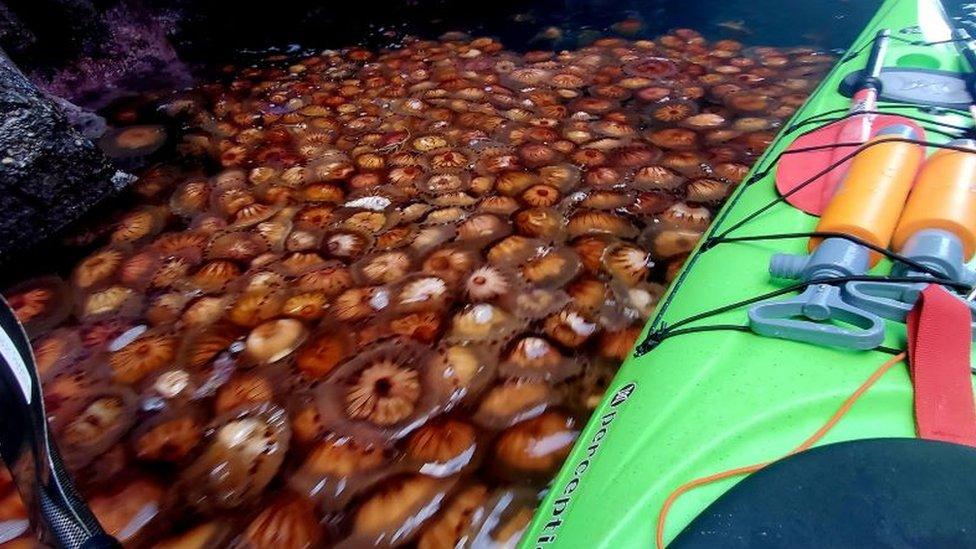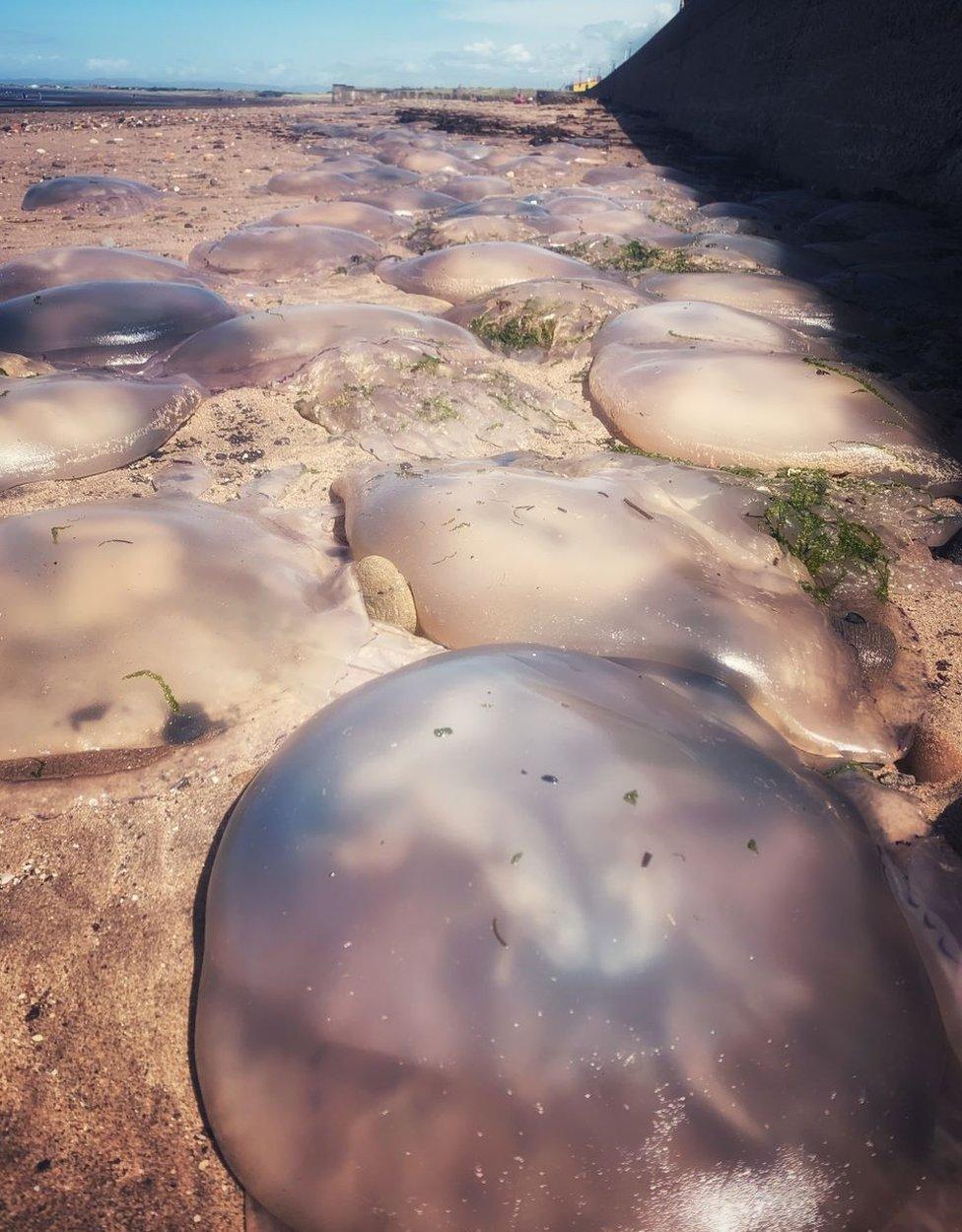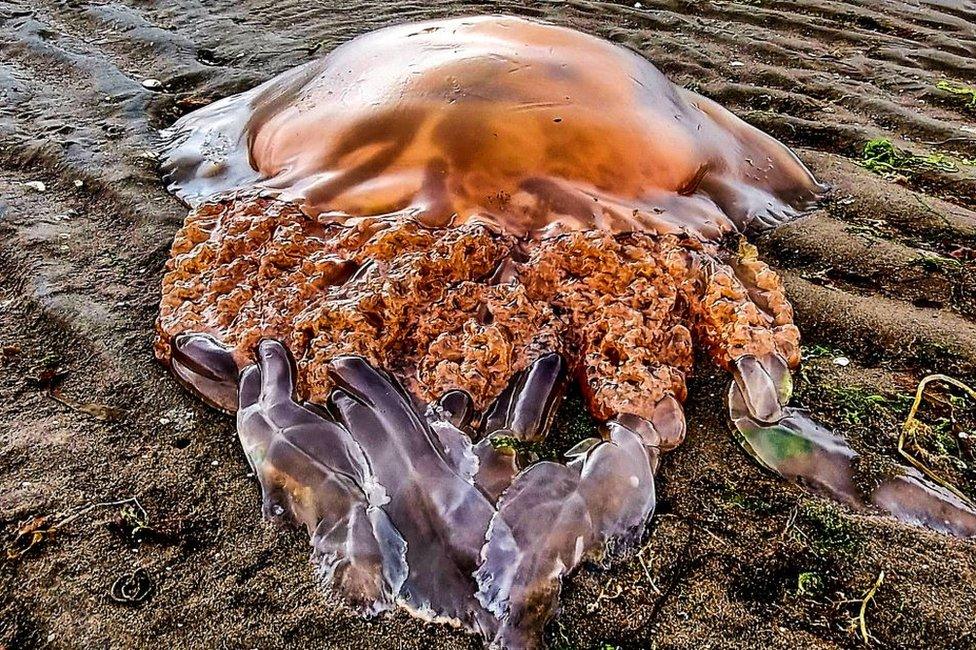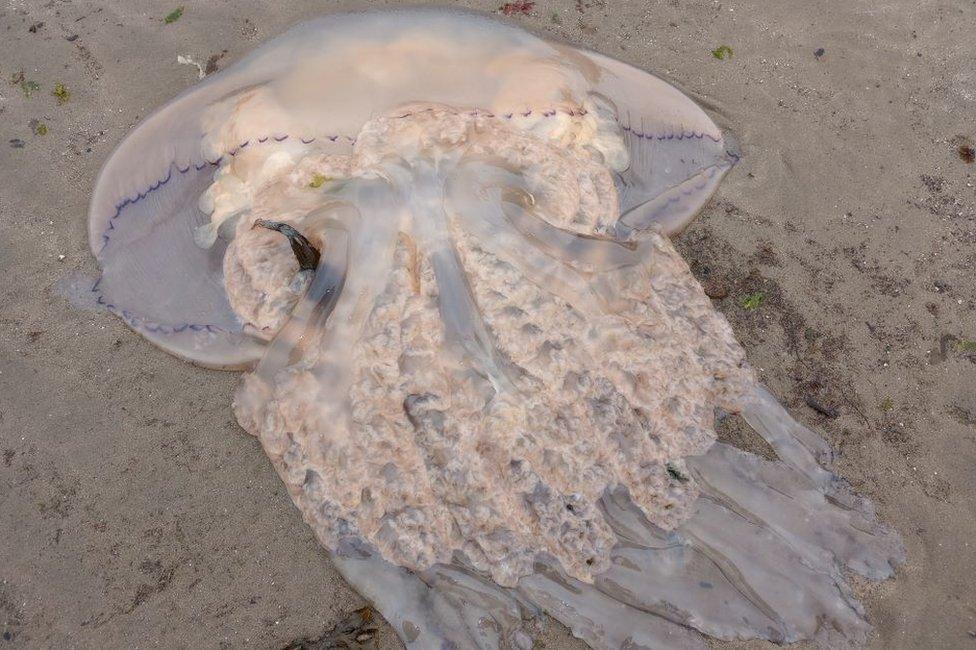'Bumper year' for jellyfish sightings in Scotland
- Published

Clearwater Paddling's picture of what it dubbed "jellyfish soup" on Barra's coast in the Western Isles
Scotland looks set for a "bumper year" for jellyfish sightings, according to the Marine Conservation Society (MCS).
Large numbers have been encountered around the coast, including in the Highlands, Western Isles and Ayrshire.
MCS said the animals were important indicators of changes in seas and oceans, including climate change.
It said most species were harmless to humans, but a few have a painful sting and people should not touch any jellyfish washed ashore.
MCS is in its 20th year of gathering reports, external of jellyfish and sea turtles. It hopes to have gathered 20,000 sightings from over the two decades by the end of this year.
Scotland conservation officer Catherine Gemmell said: "It looks to be a bumper year for jellyfish sightings across Scotland, but it is too early to tell just yet.
"We're encouraging people to report sightings of jellyfish to us, along with sightings of marine turtles.
"Both are vital in supporting ocean biodiversity and are indicators of changes in our ocean, like warming waters."

Jellyfish washed up at Prestwick

Different kinds of jellyfish have been seen so far, with reports of Moon jellyfish in north east Scotland, Compass off the west coast and Lion's Mane around central and south Scotland.
All three species can sting and people are advised not to touch even those found dead on beaches. Dogs are also potentially at risk of painful stings, and Scottish vets have advice on what owners should do if their pet is stung, external.
Jill Thomson, veterinary manager at Scotland's Rural College, added: "While most jellyfish are harmless, some have stinging components that might cause dogs to have allergic reactions around the lips and mouth if they pick them up.
"In places where there are reports of any unusual happenings, I would advise owners to keep their dogs on leads so they can prevent them from picking up unsuitable items, carrying them about or eating them."

Saeid Ullah said a Lion's Mane jellyfish washed up at Ayr beach

Alastair Burgess came across this jellyfish at Culzean beach. Mr Burgess said: "It looks more like a space invader. It's the biggest we have seen this year."
MCS said jellyfish played an important part in marine ecosystems, including as food for other animals.
Large numbers of jellyfish, a type of simple organisms called cnidarians, occur in groups called blooms from spring through to autumn.
MCS said reported sightings would help it understand if there was anything unusual about this year's.
Ms Gemmell added: "Large strandings happen most years but they do vary in their timing and location.
"In favourable conditions of warming summer waters and plentiful food, jellyfish can reproduce rapidly, occurring in very large numbers.
"If these coincide with onshore winds or currents, then jellyfish, which can't swim strongly, can find themselves stranded on the shore.
"Jellyfish are a great indicator of change in our ocean, but we need more reports of them to fully understand our changing seas."